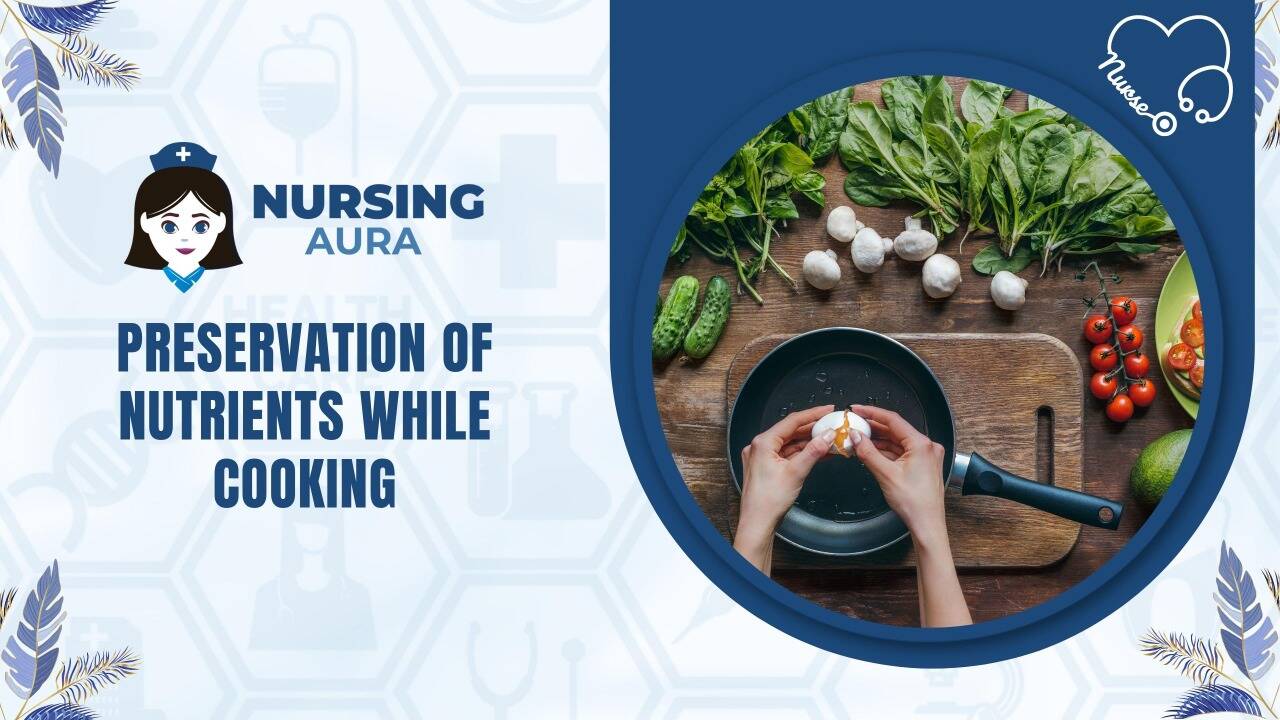Everyone has a unique method for preparing a certain meal. But have you ever questioned why the same dish is prepared differently for various individuals? You could say it’s to enhance the flavor of the food. Yes, of course, but the primary reason for this is to reduce the loss of nutritional value from that particular food item, which enhances the flavor and quality of the dish. The majority of individuals are unaware that the cooking method they choose plays a vital role in maintaining the food’s nutritional worth
Many nutrients are lost during cooking. To maintain the nutritional value of a food item, it is essential to cook it in the proper manner. If improper cooking techniques are used, the nutritious value of food products decreases substantially.
The nutritional value of vegetables and fruits is affected by food preparation techniques such as slicing, chopping, peeling, and cooking. Food preservation is the process of keeping the quality and nutritional content of food.
Follow these guidelines to protect the nutritional value of your food and maintain its nutrient content.
Fresh is optimal. In general, the most nutrient-dense produce is seasonal stuff that requires minimal preparation. Nonetheless, what might be said about winter produce? Information from the United States Department of Agriculture indicates that freezing produce after harvesting preserves 95 to 100 percent of most nutrients and minerals, except vitamin C, which reduces by up to 30 percent in frozen produce.
Use water with caution. According to USDA data, up to fifty percent of a food’s vitamin C, thiamine, vitamin B6 and folate content might be lost to the cooking water. To retain water-soluble nutrients, employ cooking methods like steaming or stir-frying that use less water, reduce the amount of water used in steaming and boiling, and reuse cooking water in soups or sauces.
Minimize cooking time. As a general rule, the longer food varieties are exposed to heat, the greater the nutrient loss. To reduce cooking time, cover the pot to retain heat and prevent heat loss; immerse veggies in water that is already boiling; and learn how to enjoy vegetables with a crunchier texture.
Your microwave is an ally. Since it reduces cooking time and water consumption, the microwave is a healthy kitchen equipment. A recent study published in the Journal of Food Science indicated that microwaving preserved more antioxidant activity in the majority of 20 veggies compared to other cooking methods.
Cut less. Cutting food into tiny pieces increases the surface area exposed to light, heat, and water, which are three variables that degrade nutrition. One exception is garlic and other members of the family Gallium (onions, leeks, shallots.) The active ingredients in these foods are increased by chopping them and letting them sit for 10 minutes before cooking.
Do not remove the peel. Keeping the skins on food sources such as potatoes, sweet potatoes, and carrots conserves more nutrients that are often on the surface. Instead of peeling, thoroughly scrub veggies with a quality vegetable brush.
Employ everything. When you’re about to toss beet root or carrot tops, rethink your decision. Numerous veggies are both tasty and nutrient-dense, so consuming the entire plant, from root to stem, is a good way to increase your daily nutrient intake.
Keep your cool. With colder temperatures, high humidity, and less air contact, nutrient loss in a variety of fruits and vegetables can be reduced. Keep the materials in the refrigerator in airtight containers.
Cooking is often helpful. Not all vegetables can be consumed uncooked. According to a 2009 study published in the Journal of Food Science, cooking procedures such as heating, microwaving, and frying can increase the antioxidant content of several vegetables, including celery, carrots, and green beans.
Regardless of how they are cut, chopped, or prepared, eating more vegetables may be the most effective way to boost nutrient consumption. Nutrient synergy — how the various elements in food interact with one another and react to cooking methods — explains why adopting a variety of cooking procedures and techniques may be the optimal strategy for enhancing the nutritional content of your fruits and vegetables.

